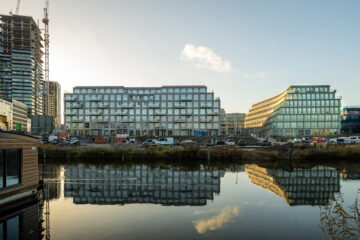Oslo’s Bold Move: Banning Cars from the City Center

Oslo, the capital of Norway, is set to embark on a groundbreaking initiative to eliminate private cars from its bustling city center. This ambitious plan, slated for completion by 2019, aims to transform urban mobility and prioritize pedestrians, cyclists, and public transportation. Here’s a closer look at Oslo’s bold decision and its implications for sustainable urban development.
Embracing a Car-Free Vision
Led by Norway’s Green Party, Oslo’s initiative seeks to create a car-free city center, reclaiming streets for people rather than vehicles. With the removal of 700 public parking spots and the introduction of 37 miles of new bike lanes, the plan reflects a commitment to enhancing walkability, reducing congestion, and improving air quality. By prioritizing alternative modes of transportation, such as cycling and public transit, the city aims to foster a more sustainable and livable urban environment.
Prioritizing People and the Environment
The decision to ban private cars aligns with Oslo’s broader goals of promoting environmental sustainability and combating climate change. By reducing greenhouse gas emissions and curbing air pollution, the city aims to create healthier and more vibrant communities. Additionally, the move reflects a growing trend across Europe, where cities are implementing measures to limit vehicular traffic and prioritize sustainable transportation options. From Madrid to Paris, urban centers are exploring innovative solutions to address the environmental and social challenges associated with car dependency.
Addressing Concerns and Ensuring Accessibility
While the car-free initiative represents a significant shift in urban planning, city officials are mindful of potential challenges and concerns. Special accommodations will be made for public vehicles, buses, and trams to ensure continued accessibility for residents and visitors. Moreover, exemptions will be granted for private vehicles transporting individuals with disabilities and delivery vehicles servicing businesses within the city center. By balancing environmental objectives with practical considerations, Oslo aims to create a more inclusive and equitable transportation system.
Setting Ambitious Targets for Emission Reduction
Oslo’s car-free initiative is part of a broader strategy to reduce greenhouse gas emissions and promote sustainable mobility. With a target of reducing emissions by 50 percent by 2020 compared to 1990 levels, the city is taking decisive action to address climate change and improve air quality. Beyond the city center, Oslo aims to decrease car traffic by 20 percent by 2019 and 30 percent by 2030, signaling a long-term commitment to sustainable urban development.
Conclusion: A Model for Sustainable Urban Mobility
Oslo’s decision to ban cars from its city center represents a bold step towards creating a more sustainable, people-centric urban environment. By prioritizing pedestrians, cyclists, and public transportation, the city is reimagining urban mobility and setting a precedent for other cities to follow. With ambitious emission reduction targets and a commitment to accessibility and inclusivity, Oslo is poised to lead the way towards a greener, healthier future for urban living.





























